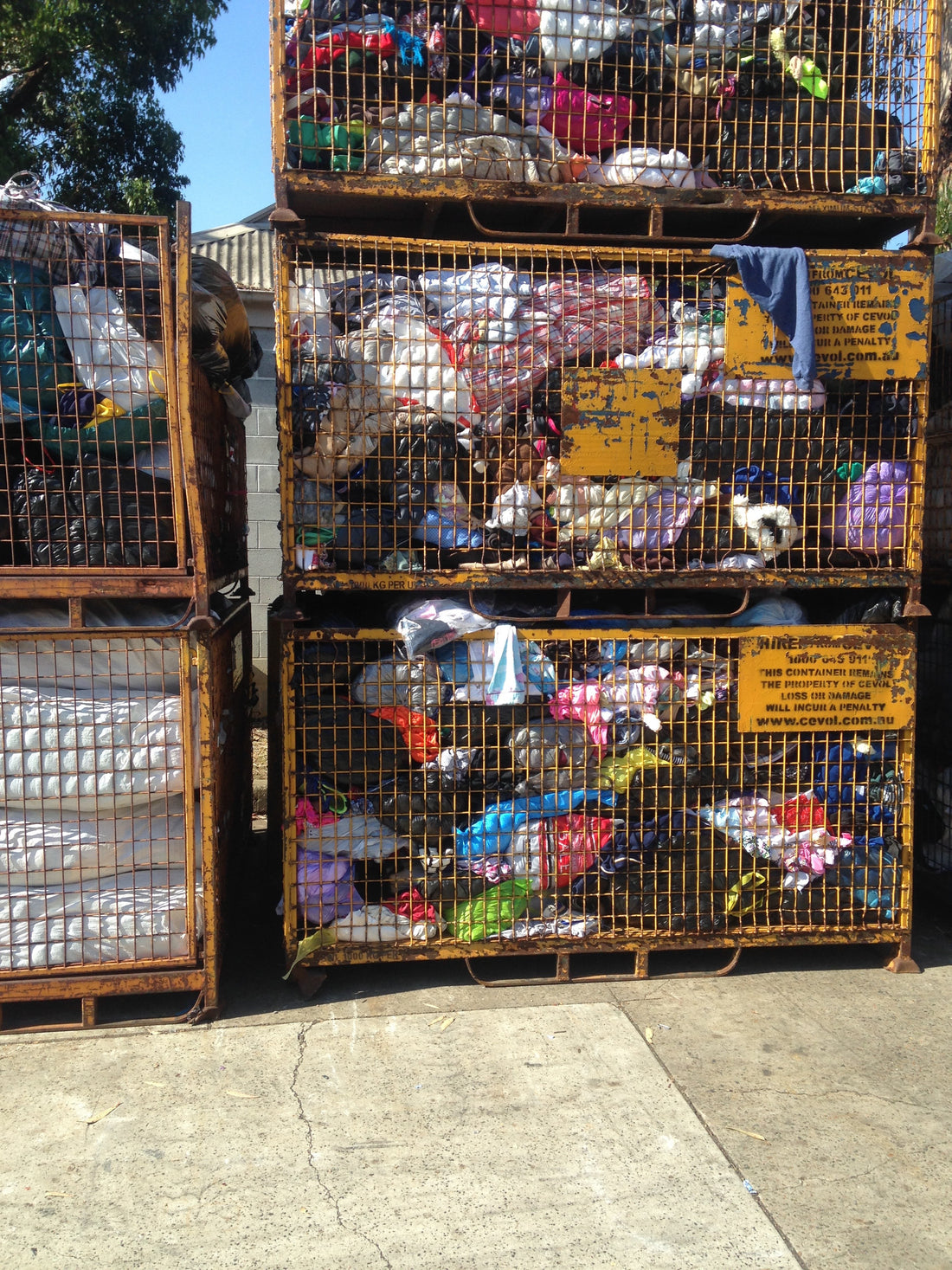
With the rise of fast fashion comes more textile waste than ever before. Australians now throw out 27kg of clothing per person, per year. Globally, it's 50 million tonnes – and 80% ends up in landfill.
Textiles in landfill emit methane gases into the atmosphere (which are 25 times more harmful than carbon), accelerating global warming.
When it’s time to get rid of old clothes (and after considering swapping with friends or repair!) there's the option to use them as rags around the house, throw them in the bin or take them to charities in the local area.
Donating used clothing seems like a much better alternative than throwing them away, but what happens to our clothes then?
Co-founder Karina visited The Smith Family's Villawood recycling centre in western Sydney to find out.
The Smith Family was a charity established to provide support to people that experience barriers in the labour market, often with material necessities like food and clothing. Upon deciding the most impactful way to break the poverty cycle is to support a child's education, The Smith Family is now helping tens of thousands of kids and their families through school.
Although it's not their primary purpose, The Smith Family continues their clothing recycling business in a big way. In fact, it helps fund their education cause.
Upon arrival at the sorting centre I was presented with some steel cap Dunlops and a high vis vest. We headed to where it all begins – the boom gates where 12 million kilograms of old clothes, shoes, toys and illegally dumped trash (like old car batteries and other cumbersome crap) comes through each year.

We visited the sorters, many of whom have been with The Smith Family for twenty to twenty-five years. They pull apart shoes from winter gear, good summer stuff from soiled stuff. They sort 180 pieces an hour average, each.

Sorting stations; the workers receive all items off a conveyor belt from the delivery trucks
Only 3% of what comes through the gates is good enough to be sold at The Smith Family retail stores.
Two percent is sold to be used for rags (soiled cotton and other absorbent textiles mostly, for wiping oil, water etc) to mechanical industries.
Then, 50% gets exported as SAMS. SAMS is The Smith Family's [patented] range of old clothing called Smith Australian Mix-Summer. What Australia does best – shorts, t-shirts and summer dresses – are all baled up together and shipped to Dubai and Malaysia to either be worn, or sorted and re-baled and sent to African nations.

SAMS (Smith Australia Mix Summer) ready to ship
Another 15% is sent to export markets in the middle east and Asia, some of this winter stuff that has no market in Australia, like heavy coats.

There is also a considerable amount of corporate wear. This is tricky because these suits, high vis gear, warm sweaters and smart dresses are in great condition but cannot be sold to overseas markets due to the logo, and even colour, being recognised out of context and therefore damaging to the brand.

These suits luckily don't have a logo but getting all those coat hangers out is a big job
Finally, 30% is what The Smith Family calls waste. Fourteen percent of this is shipped off as Processing Engineered Fuel (PEF) which powers cement factories in Asia. And 16% ends up as landfill.
So The Smith Family does an incredibly good job of making something from what most of us consider trash.
And it's no small business worldwide. For instance, 700 million kilograms of old clothing is exported from USA each year. Australia exports 40 million kilograms and The Smith Family makes up about 10% of that.
With textile waste flooding the world, there are bans in place by some east African nations to stop the overwhelming flow of used clothes from developed countries. As well as landfill fires and pollution, local manufacturing takes a big hit. The ABC’s Dead White Man’s Clothes is a must-read for any person considering the full life cycle of their clothing.
The immense impact of throwing clothing away is why extending the life of our clothes, and finding local ways to rescue them, is so important.

Karina Seljak at The Smith Family

